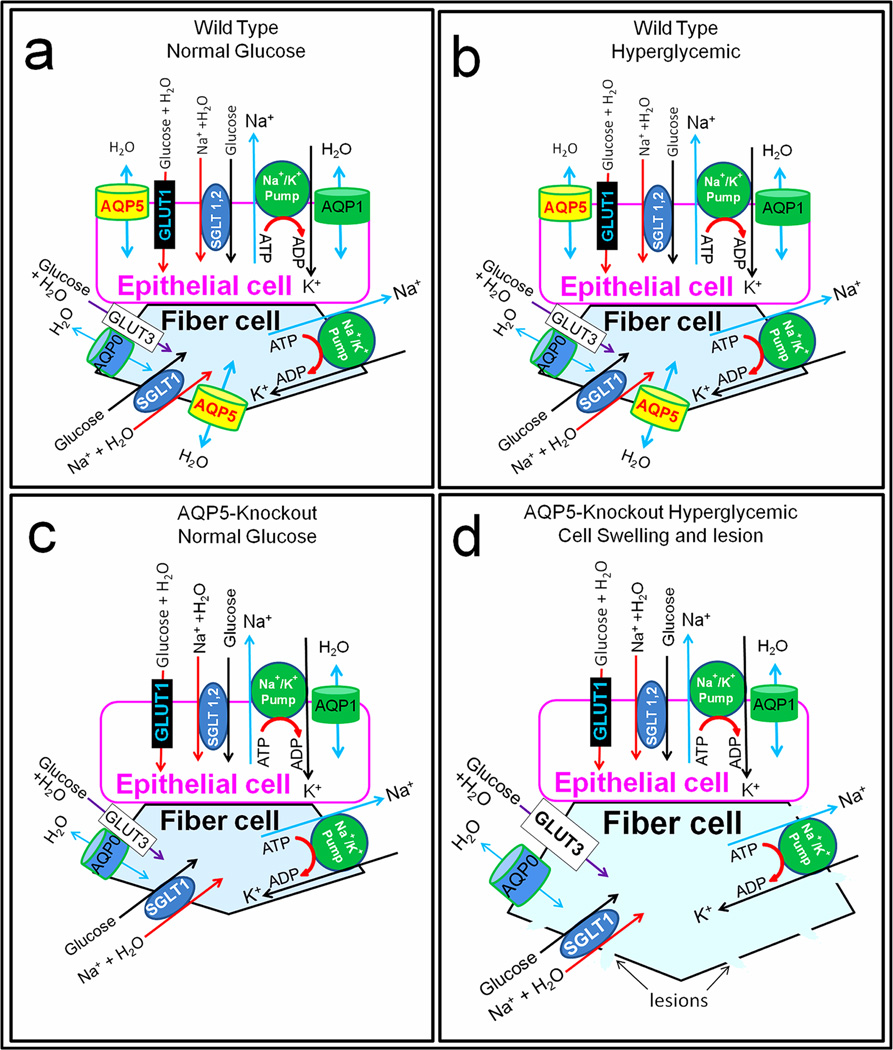Fig. 4.
Schematic models illustrating possible regulation of cellular osmotic stress through AQP5 water efflux to maintain lens homeostasis and transparency. (a,b,c,d) In epithelial cells, water enters along with glucose through glucose transporter GLUT1, and with glucose and sodium through sodium glucose cotransporters SGLT1 and 2. Na+/K+-ATPase pumps the excess sodium out. In (a) and (b) AQP1 and AQP5 are present for water efflux to maintain homeostasis while in (c) and (d) only AQP1 is present; being a highly efficient water channel, lack of AQP5 might not have affected the homeostasis of the cell in (c) and (d). In fiber cells, water enters along with glucose through GLUT3, and with glucose and sodium through SGLT1. Na+/K+-ATPase pumps excess sodium out in (a), (b) and (c). In (a) and (b) AQP0 and AQP5 are present for water efflux to maintain homeostasis. In (c) and (d) AQP5 is knocked out and only AQP0 is present. In (c) with normal glucose, AQP0 was able to create enough water outflow and there was no cataract development. However, in (d) AQP0 being a poor water transporter, absence of AQP5 affected water efflux causing water retention and swelling under hyperglycemic conditions. Na+/K+-ATPase probably could not pump excess sodium out due to lack of enough water efflux. Accumulation of water, sodium and glucose caused osmotic stress resulting in fiber cell lesions, leakage and subsequently, cataract.

